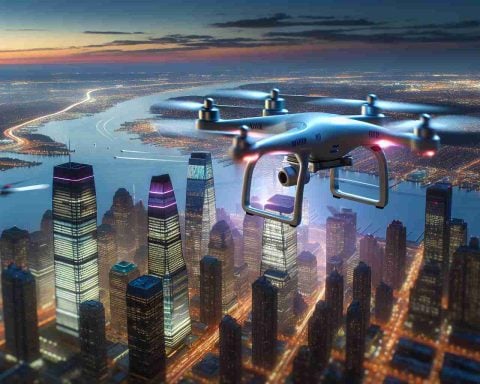In a surprising twist to its ambitious plans, ISRO has announced a brief delay in the launch of its Polar Satellite Launch Vehicle (PSLV-C60), originally slated for 9:58 PM. The postponement of just two minutes stems from an unexpected issue: a congestion of satellites orbiting Earth.
This disruption primarily involves the increasing number of satellites from SpaceX’s Starlink network, which presently operates approximately 7,000 satellites in low Earth orbit, with future expansions bringing that number closer to 12,000. The decision to adjust the launch time was made after experts observed potential conflicts due to these countless orbiting crafts.
The SpaDeX mission is set to be a landmark achievement for India’s space program, as it aims to showcase new docking technology essential for upcoming projects such as human spaceflights and the establishment of India’s own space station. This intricate experiment features two spacecraft – SDX01 and SDX02 – that will begin positioned 5 kilometers apart, ultimately aiming to dock at an altitude of 470 kilometers above Earth after a series of technical maneuvers lasting 10 to 14 days.
As the space landscape becomes increasingly crowded, ISRO’s pioneering efforts in navigating these challenges will be vital for the future of space exploration and technology development. Stay tuned as we follow the progress of this groundbreaking mission.
ISRO’s PSLV-C60 Launch Delayed: What You Need to Know About the SpaDeX Mission
Overview of the PSLV-C60 Launch Delay
The Indian Space Research Organisation (ISRO) has announced a slight delay in its Polar Satellite Launch Vehicle (PSLV-C60), originally scheduled for a 9:58 PM lift-off. This postponement, lasting just two minutes, has been attributed to unexpected congestion in Earth’s orbit, primarily due to the growing number of satellites from SpaceX’s Starlink network.
Understanding the Satellite Congestion Issue
Currently, SpaceX operates about 7,000 satellites in low Earth orbit, with plans to expand this fleet to around 12,000 in the future. This surge in satellite numbers has raised concerns regarding potential collisions and spatial conflicts, prompting ISRO to delay the mission slightly to ensure safety during the launch process. Such adjustments are becoming necessary as the number of operational satellites continues to increase globally.
Key Details About the SpaDeX Mission
The SpaDeX (Space Docking Experiment) mission represents a significant step forward for India’s space ambitions. It aims to demonstrate advanced docking technologies that are crucial for future endeavors, including crewed space missions and the establishment of India’s own space station. The mission involves two spacecraft, SDX01 and SDX02, which will start 5 kilometers apart and aim to successfully dock at an altitude of 470 kilometers above Earth. The entire docking sequence is expected to take between 10 to 14 days and will involve precise technical maneuvers, highlighting ISRO’s capabilities in orchestrating complex space operations.
Why This Mission Matters
The success of the SpaDeX mission is not merely a test of technical prowess; it is a cornerstone for India’s future in human spaceflight and autonomous operations in space. The ability to dock spacecraft securely and efficiently is essential for constructing larger space stations and enabling long-duration crewed missions.
Current Trends in Satellite Launches
As the number of satellites grows, there is an increasing focus on sustainable space practices. Organizations across the globe are now prioritizing guidelines for space debris management to mitigate collision risks, underscoring the importance of responsible operations in an increasingly congested space environment.
Future Implications for ISRO
The challenges posed by satellite congestion will force space agencies like ISRO to innovate continuously. This could lead to the development of automated systems capable of dynamically responding to the orbital environment. ISRO’s commitment to overcoming these hurdles will be crucial in maintaining its position at the forefront of international space exploration.
Conclusion
Stay updated on the unfolding developments of the SpaDeX mission and ISRO’s adaptability to emerging challenges in space exploration. The unfolding scenario testifies to the complexities of modern space operations, but also to ISRO’s resilience and innovative spirit in navigating these challenges.
For more insights on space exploration and ISRO’s missions, visit ISRO’s official website.

















